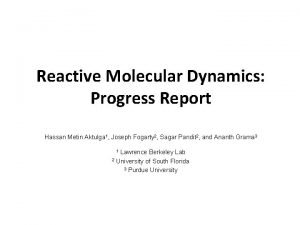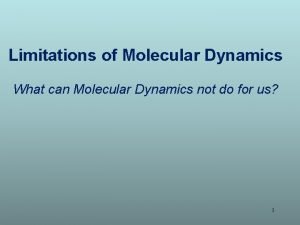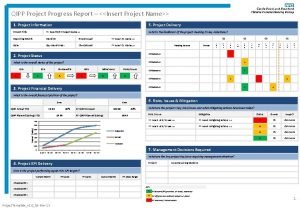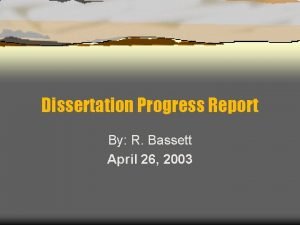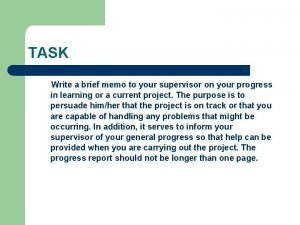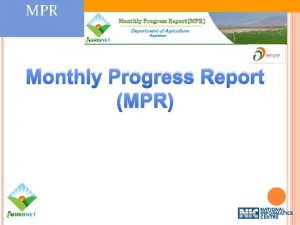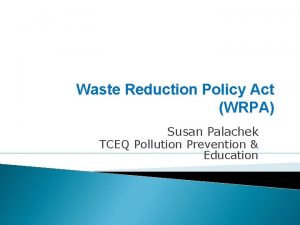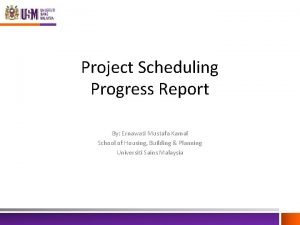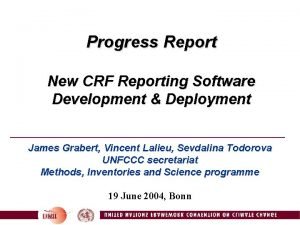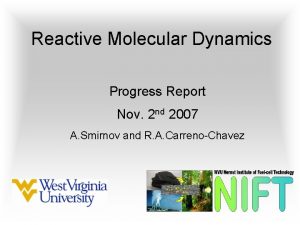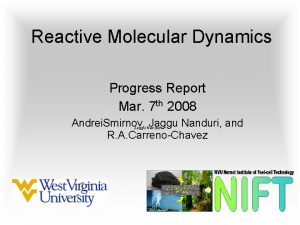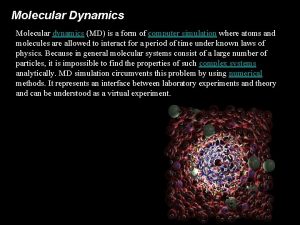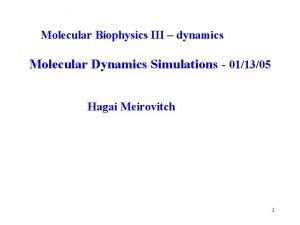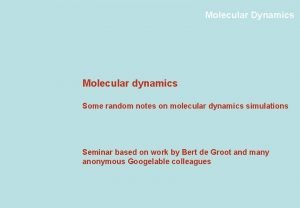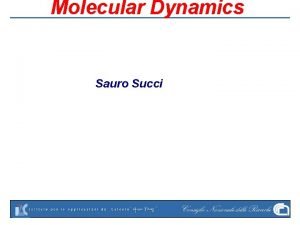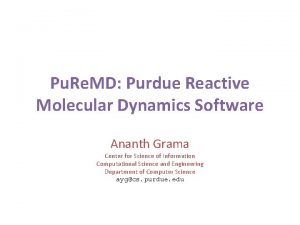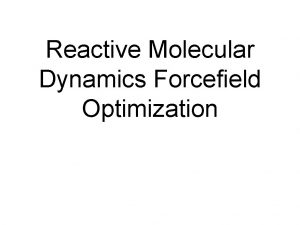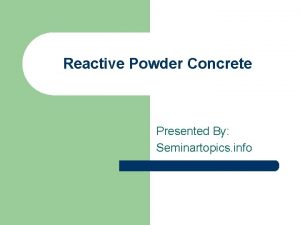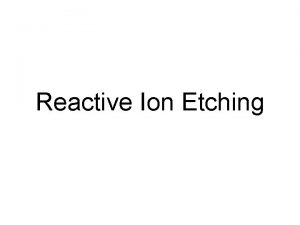Reactive Molecular Dynamics Progress Report Hassan Metin Aktulga






















- Slides: 22

Reactive Molecular Dynamics: Progress Report Hassan Metin Aktulga 1, Joseph Fogarty 2, Sagar Pandit 2, and Ananth Grama 3 Lawrence Berkeley Lab 2 University of South Florida 3 Purdue University 1

Sequential Realization: Serial. Reax ü Excellent per-timestep running time • • efficient generation of neighbors lists elimination of bond order derivative lists cubic spline interpolation: for non-bonded interactions highly optimized linear solver: for charge equilibration ü Linear scaling memory footprint • fully dynamic and adaptive interaction lists Related publication: Reactive Molecular Dynamics: Numerical Methods and Algorithmic Techniques H. M. Aktulga, S. A. Pandit, A. C. T. van Duin, A. Y. Grama SIAM Journal on Scientific Computing (to appear)

Basic Solvers for QEq Sample systems • bulk water: 6540 atoms, liquid • lipid bilayer system: 56, 800 atoms, biological system • PETN crystal: 48, 256 atoms, solid Solvers: CG and GMRES • H has heavy diagonal: diagonal pre-conditioning • slowly evolving environment : extrapolation from prev. solutions Poor Performance: tolerance level = 10 -6 which is fairly satisfactory much worse at 10 -10 tolerance level # of iterations = # of matrixvector multiplications actual running fraction of total time in seconds computation time due to cache effects more pronounced here

ILU-based preconditioning ILU-based pre-conditioners: no fill-in, 10 -2 drop tolerance • effective (considering only the solve time) bulk water system cache effects are still evident bilayer system • no fill-in + threshold: nice scaling with system size • ILU factorization is expensive time to compute preconditioner solve time (s) total time (s) bulk water/ GMRES+ILU 0. 50 0. 04 0. 54 bulk water/ GMRES+diagonal ~0 0. 11 system/solver

ILU-based preconditioning Observation: can amortize the ILU factorization cost slowly changing simulation environment re-usable pre-conditioners PETN crystal: solid, 1000 s of steps! Bulk water: liquid, 10 -100 s of steps!

Memory Management Compact data-structures n-1’s data n n-1 n’s data in CSR format • neighbors list • Qeq matrix • 3 -body intrs n n-1’s data reserved for n-1 n’s data reserved for n in modified CSR • bonds list • hbonds list Dynamic and adaptive lists • • initially: allocate after estimation at every step: monitor & re-allocate if necessary Low memory foot-print, linear scaling with system size

Validation Hexane (C 6 H 14) Structure Comparison Excellent agreement!

Comparison to LAMMPS-Reax Time per time-step comparison Qeq solver performance Memory foot-print • different QEq formulations • similar results • LAMMPS: CG / no preconditioner

Parallel Realization: Pu. Re. MD Built on the Serial. Reax platform ü Excellent per-timestep running time ü Linear scaling memory footprint Extends its capabilities to large systems, longer time-scales ü Scalable algorithms and techniques ü Demonstrated scaling to over 3 K cores Related publication: Parallel Reactive Molecular Dynamics: Numerical Methods and Algorithmic Techniques H. M. Aktulga, J. C. Fogarty, S. A. Pandit, A. Y. Grama Parallel Computing (to appear)

Parallelization: Messaging Performance Comparison: Pu. Re. MD with direct vs. staged messaging

Pu. Re. MD: Weak Scaling Bulk Water: 6540 atoms in a 40 x 40 A 3 box / core

Pu. Re. MD: Strong Scaling Bulk Water: 52320 atoms in a 80 x 80 A 3 box

Pu. Re. MD: Integration Status • Purdue Reax fully integrated into LAMMPS (as of November 2010). • Active user and developer community.

Active LAMMPS-Reax User Community • • • Konstantin Shefov - Sankt-Peterburgskij Gosudarstvennyj Universitet Camilo Calderon - Boston University Ricardo Paupitz Barbosa dos Santos - Universidade Estadual de Maringa Shawn Coleman - University of Arkansas Paolo Valentini - University of Minnesota Hengji Zhang - University of Texas at Dallas Benjamin Jensen - Michigan Technological University Xiao Dong Han - Beijing University Robert Meissner - Fraunhofer Institute for Manufacturing Technology and Advanced Materials, Bremen James Larentzos - High Performance Technologies, Inc. (HPTi)

Active LAMMPS-Reax User Community • • • Goddard et al. , Cal. Tech Van Duin et al. , PSU Thompson, Plimpton, et al. , Sandia Pandit et al. , USF Buehler et al. , MIT Vashishtha et al. , USC

Reax Forcefield Optimization Utility of method dependent on fitness of forcefield Reax requires high level of transferability - no site specific atom types General Process: • • Define parameters to be optimized Choose training set systems and associated data Define error between expected values and computed values Minimize error by varying parameters

Reax Forcefield Optimization • • • Tool for automated generation of training sets Input Procedure – – – Generate Systems – Gaussian input files Run various quantum calculations and geometry optimizations in Gaussian Read Gaussian output and generate FFOpt input files

Training Set Generator (Train. Gen): Systems • • • 3 -Body systems – Explore bond length and angle energy profiles 4 -Body systems – For pre-optimized system, explore torsion energy profile Random Systems – Randomly place atoms for a specified stoichiometric ratio and system size

Train. Gen: Calculations • • Single point energies using B 3 LYP for 3 - and 4 -body systems. Geometry optimization followed by single point energy for random systems. – – – • • Multiple levels of increasing accuracy optimizations Semi-empirical PM 6 forcefield B 3 LYP with increasing basis set size For 3 - and 4 -body systems internal energies were compared For random systems, internal energy, Mulliken partial charges, and Wiberg bond indices (bond order) were compared.

Force Field Optimizaiton: FFOpt • • Automatic Force Field Refinement Procedure: – Choose a parameter – Run simulations with parameter incremented, decremented, and unmodified. – Analyze results, compare with Gaussian data and generate an error value for each parameter value. – Fit a parabola, find the minimum, and analyze that value. – Choose parameter from among the four values.

FFOpt: Status • • All codes are developed and are currently being used. FFOpt is running on systems with Oxygen and Hydrogen at this time (validation on water).

FFOpt: Forthcoming Developments • Validation of the refinement procedure • Full Optimization (multidimensional, highly nonlinear optimization)
 Metin aktulga
Metin aktulga Hasan metin aktulga
Hasan metin aktulga Difference between progress report and status report
Difference between progress report and status report Physical progress and financial progress
Physical progress and financial progress Covalent bond melting point
Covalent bond melting point Giant molecular structure vs simple molecular structure
Giant molecular structure vs simple molecular structure Giant molecular structure vs simple molecular structure
Giant molecular structure vs simple molecular structure Molecular dynamics limitations
Molecular dynamics limitations How to report project progress
How to report project progress Progress report for ecd
Progress report for ecd Fyp presentation slides
Fyp presentation slides Dissertation progress report yale
Dissertation progress report yale Memo to supervisor
Memo to supervisor Mpr monthly progress report format
Mpr monthly progress report format Example of progress report in technical writing
Example of progress report in technical writing Progress report for internship
Progress report for internship Growing success levels
Growing success levels Tceq p2 annual progress report
Tceq p2 annual progress report Seo progress report
Seo progress report Progress report example
Progress report example Software development progress report
Software development progress report Metin tabanlı programlama nedir
Metin tabanlı programlama nedir Iltizam sistemi nedir
Iltizam sistemi nedir
